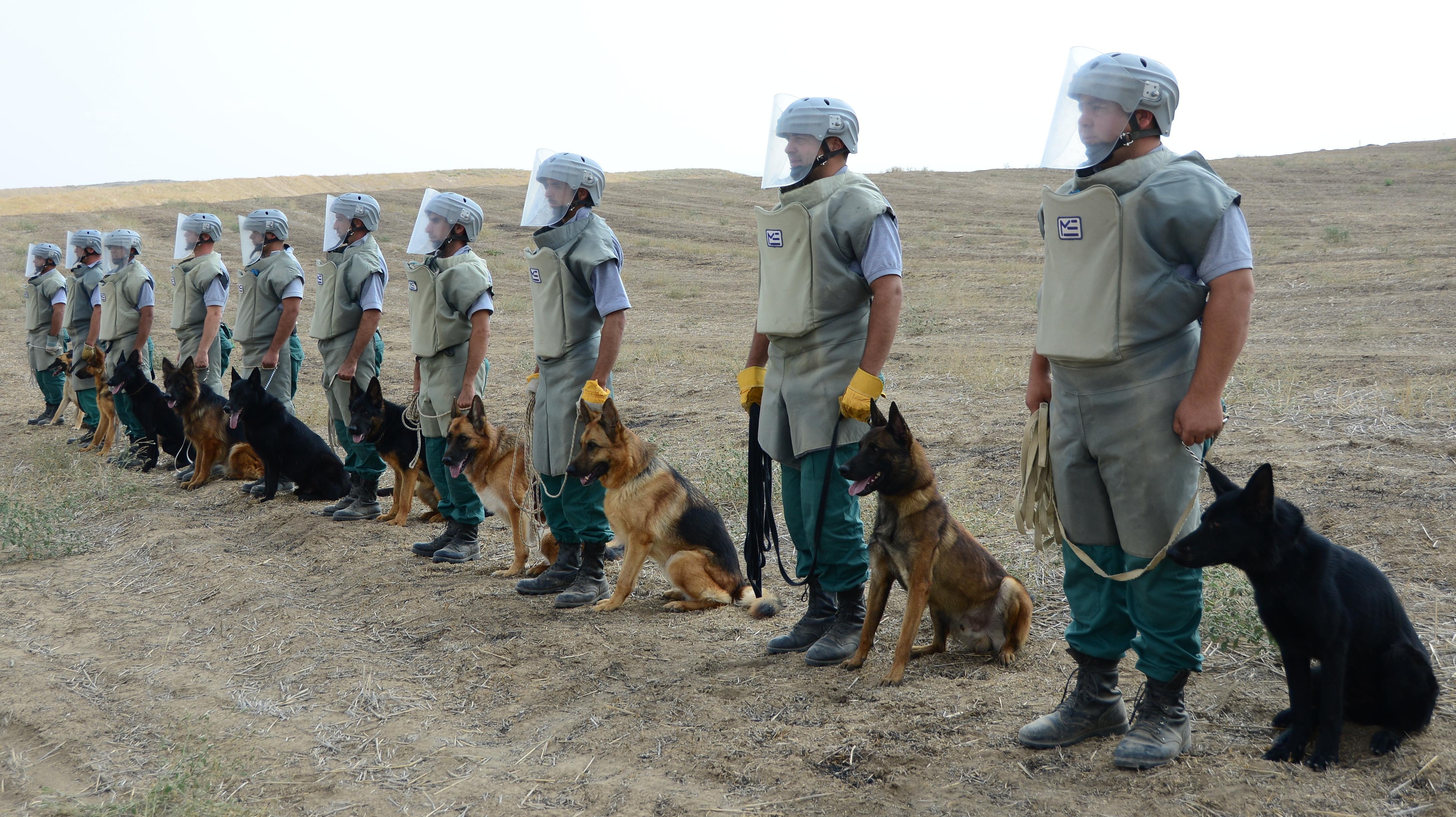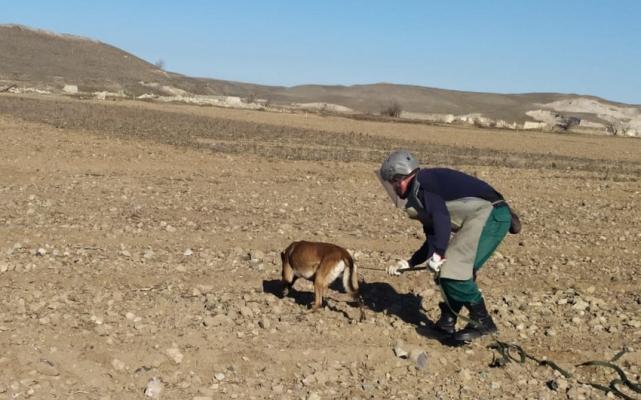Bomb-sniffing dog Deena saves owner's life during mine clearance in Karabakh Memorable feat of a four-legged hero
There is a hypothesis among scientists that the dog was the first animal tamed and domesticated by humans. There is still some debate about when it happened, but the most widely accepted version is that the dog was domesticated 10,000 to 14,000 years ago during the Neolithic. Back then, dogs were used for guarding and hunting. Today the dog is a beloved pet, a formidable guardian, and a loyal friend. It is also a life-saving animal.

We can meet service dogs everywhere - at airports and train stations, in big shopping malls, at police stations, where they help detect drugs and explosives. Quite literally, a police and border patrol dog is a formidable (for criminals) weapon that never fails, unlike a traditional firearm. Even the most up-to-date equipment can be fooled, but a dog's sense of smell, sight, and hearing will never fail. It is not by chance that the four-legged guards are portrayed in so many movies, the most famous of which are probably "K9" and "Come here, Mukhtar! But dogs are not only used by the police; the army and Emergencies are also dependent on them. While the army uses dogs as field medics, communicators, spies, and even subversives and saboteurs, the emergency services use them as rescuers and sappers.
...The post-war Karabakh region of Azerbaijan is dotted with mines left behind by the Armenian occupiers. It is impossible to carry out the full-scale reconstruction of this region, let alone return hundreds of thousands of people to their homes, without demining. Here, too, our four-legged friends, demining dogs, mainly Belgian and German shepherds, came to the aid of the Mine Action Agency and the Ministry of Emergency Situations. Very little is written about their hard work, but it is difficult to overestimate the contribution of these animals to the clearance of liberated territories and thus to saving people's lives. Unfortunately, just like humans, rescue dogs also die during mine clearance. This is what happened during the mine clearance in the Gubadli district.
This morning, Najmeddin Huseynov, a 38-year-old sapper of Azerbaijan's Mine Action Agency, began his usual routine with his faithful assistant, Deena, a Belgian shepherd dog. For us, the process of finding and neutralizing mines seems extremely life-threatening, and we must keep away from it as far as possible. For a sapper and his four-legged helper, it is a quiet, slow, and monotonous job, when it is not enough just to find the mine, but also to understand what kind of devices you have to deal with. Najmeddin pays close attention to Deena, who is specially trained to find mines. Suddenly the dog starts to worry, whining, sniffing the ground which Huseynov should have walked on in a few seconds. The whining became stronger and suddenly the sapper was hit by the thought: "A mine!". He stood still and was about to pull the leash back in order to drag the dog away from the danger zone when a powerful explosion occurred. At the last moment, the dog found an anti-personnel mine and used its behaviour to signal the danger, which saved the life of Huseynov, who sustained minor wounds. Deena saved the man's life at the cost of her own. Dogs are ready to sacrifice themselves without hesitation to save the life of their master or training partner.

In the US, police dogs who die in the line of duty or while rescuing a partner are buried with great honour. The Belgian shepherd dog Deena performed her greatest feat today in Gubadli - she found a mine and saved the life of sapper Najmeddin Huseynov. We hope that in the future when Gubadli is completely cleared of mines and its residents return there, a monument will be erected at the site of Deena's death as a sign of human gratitude to the four-legged rescuer.








